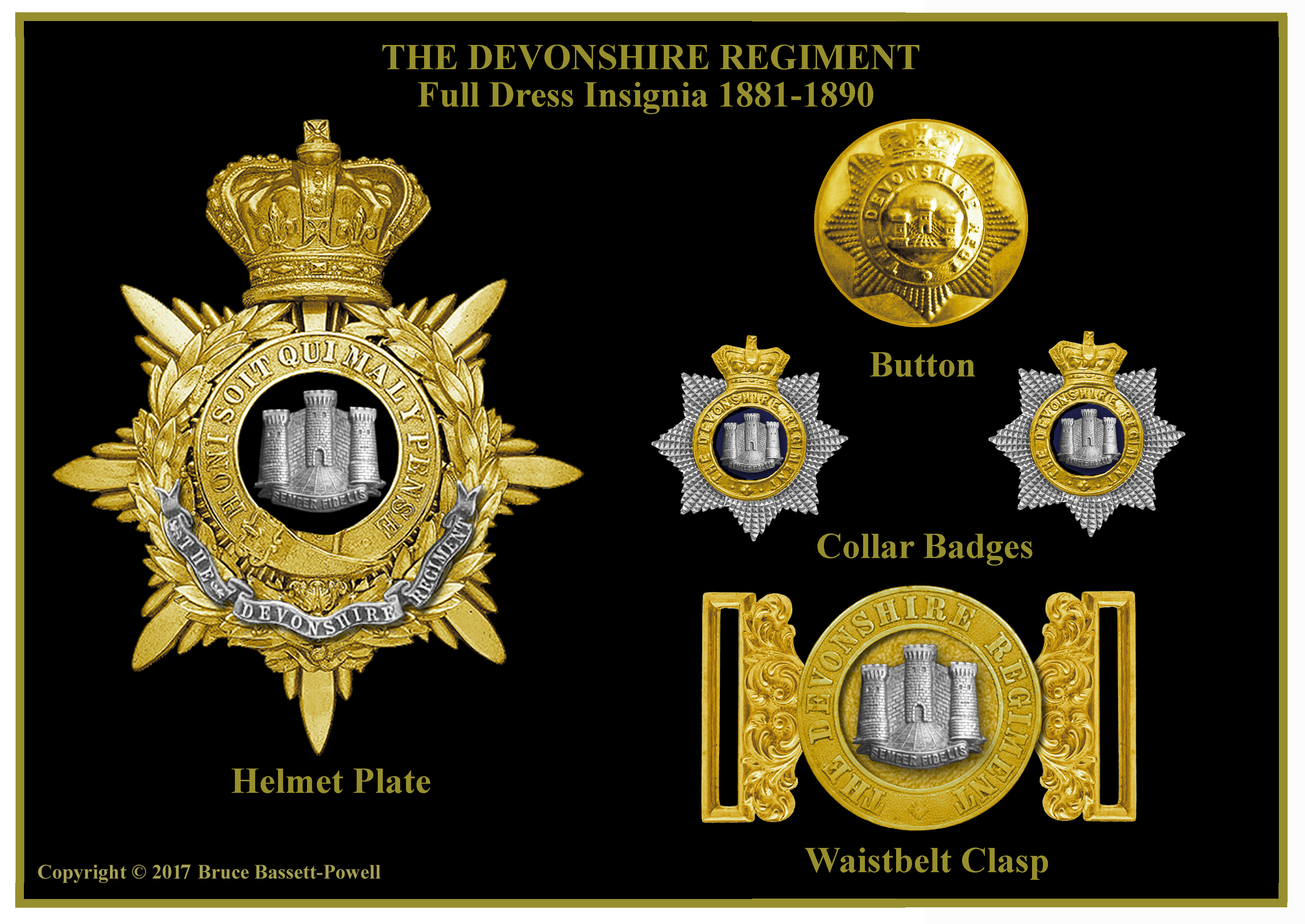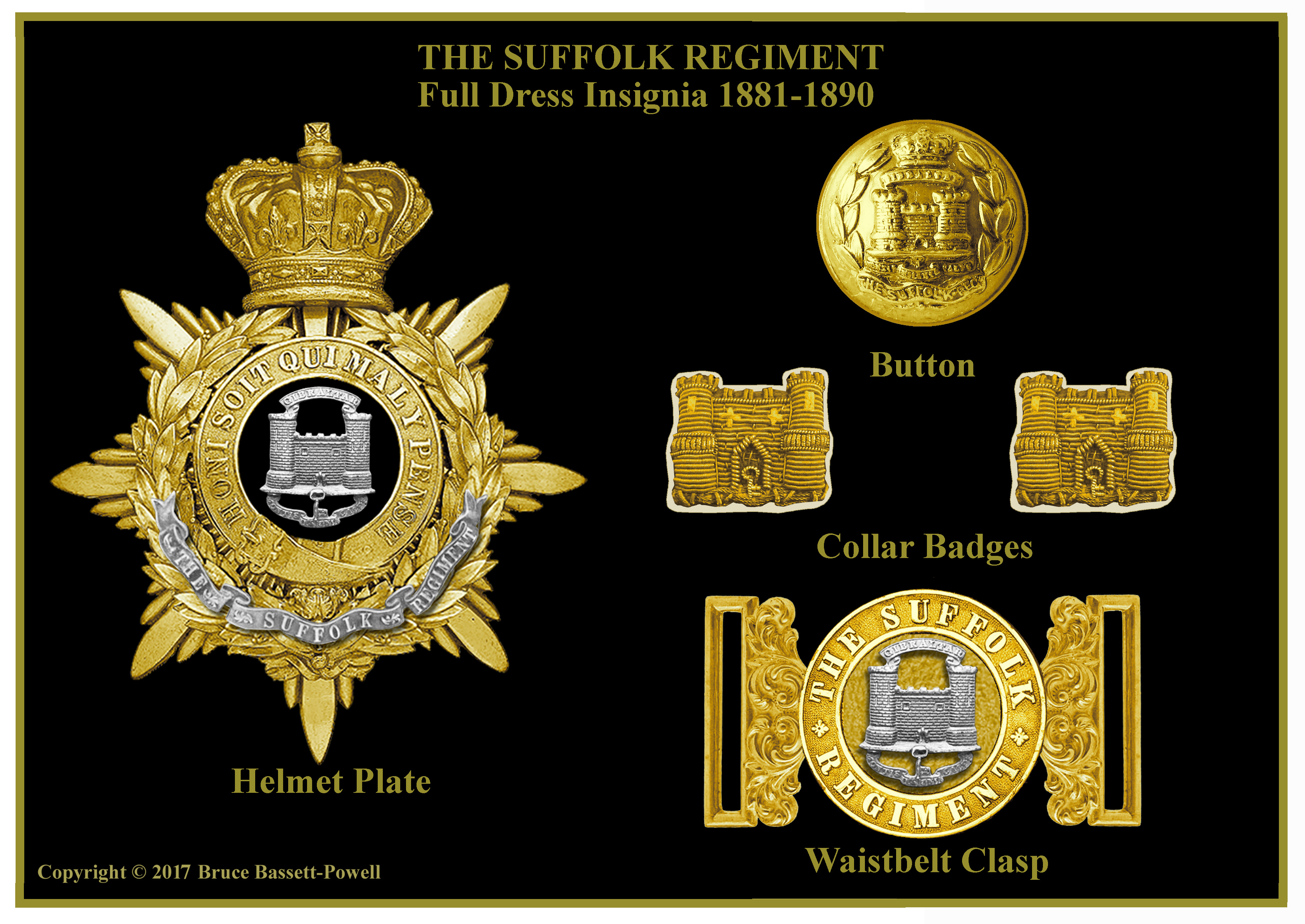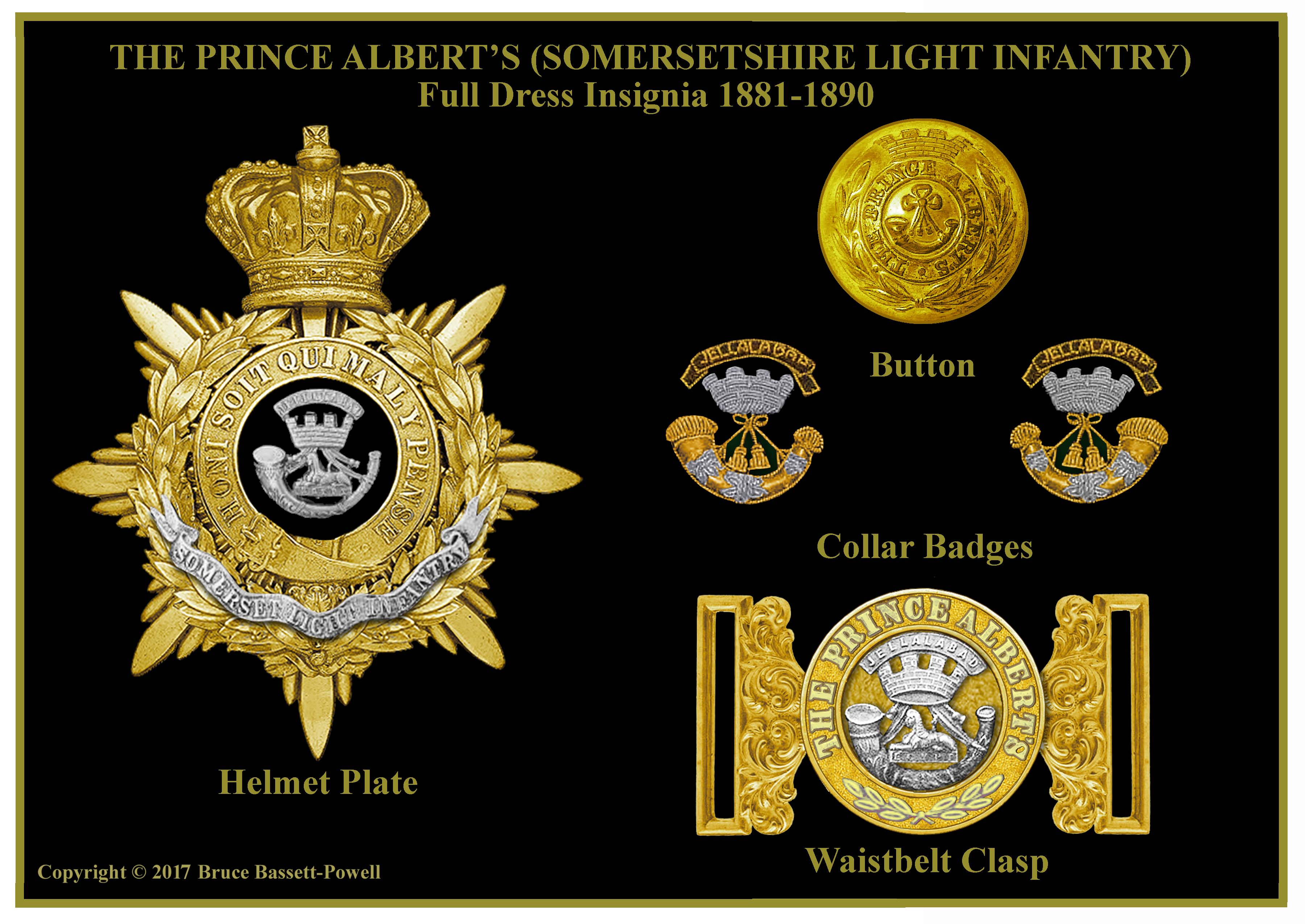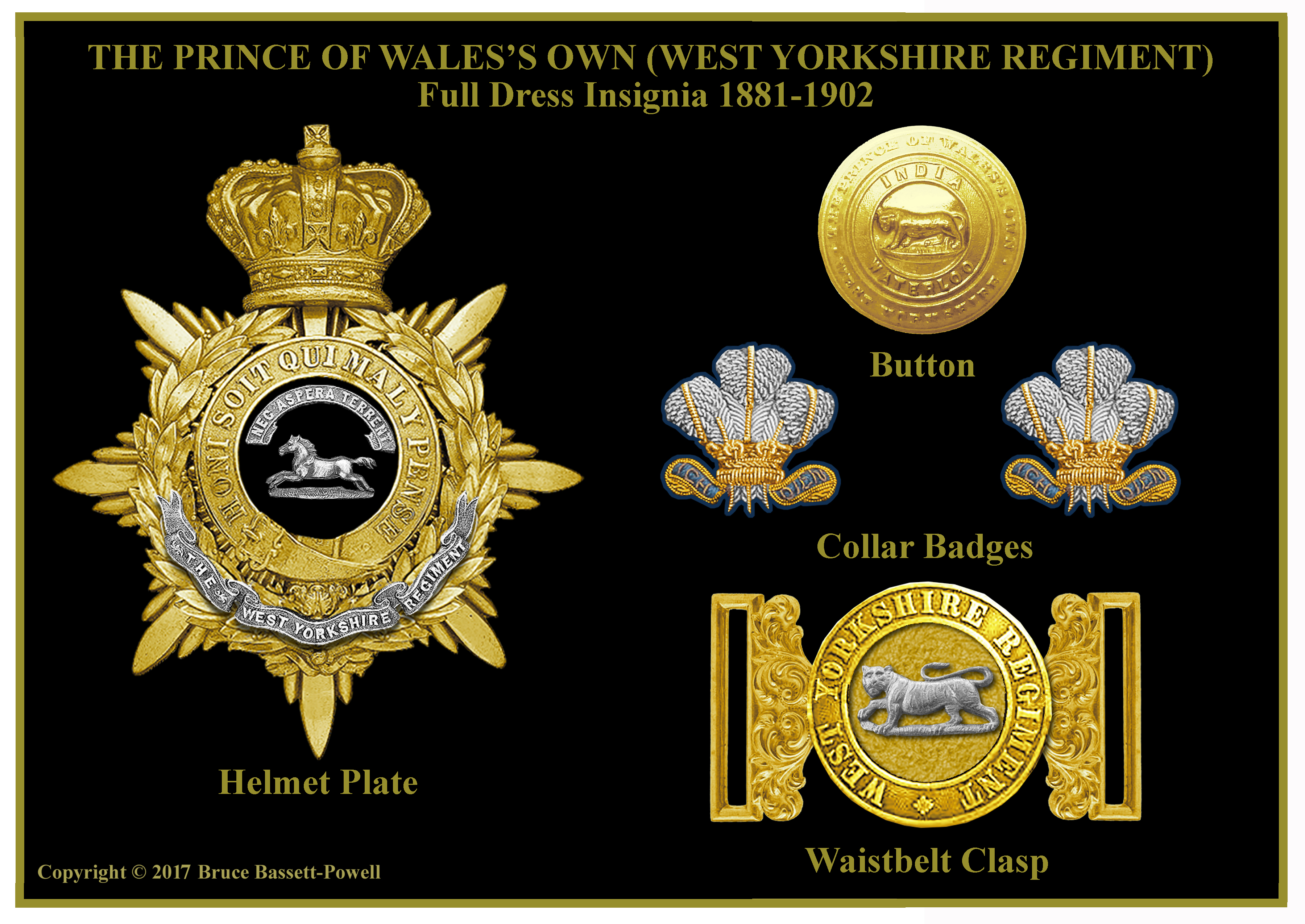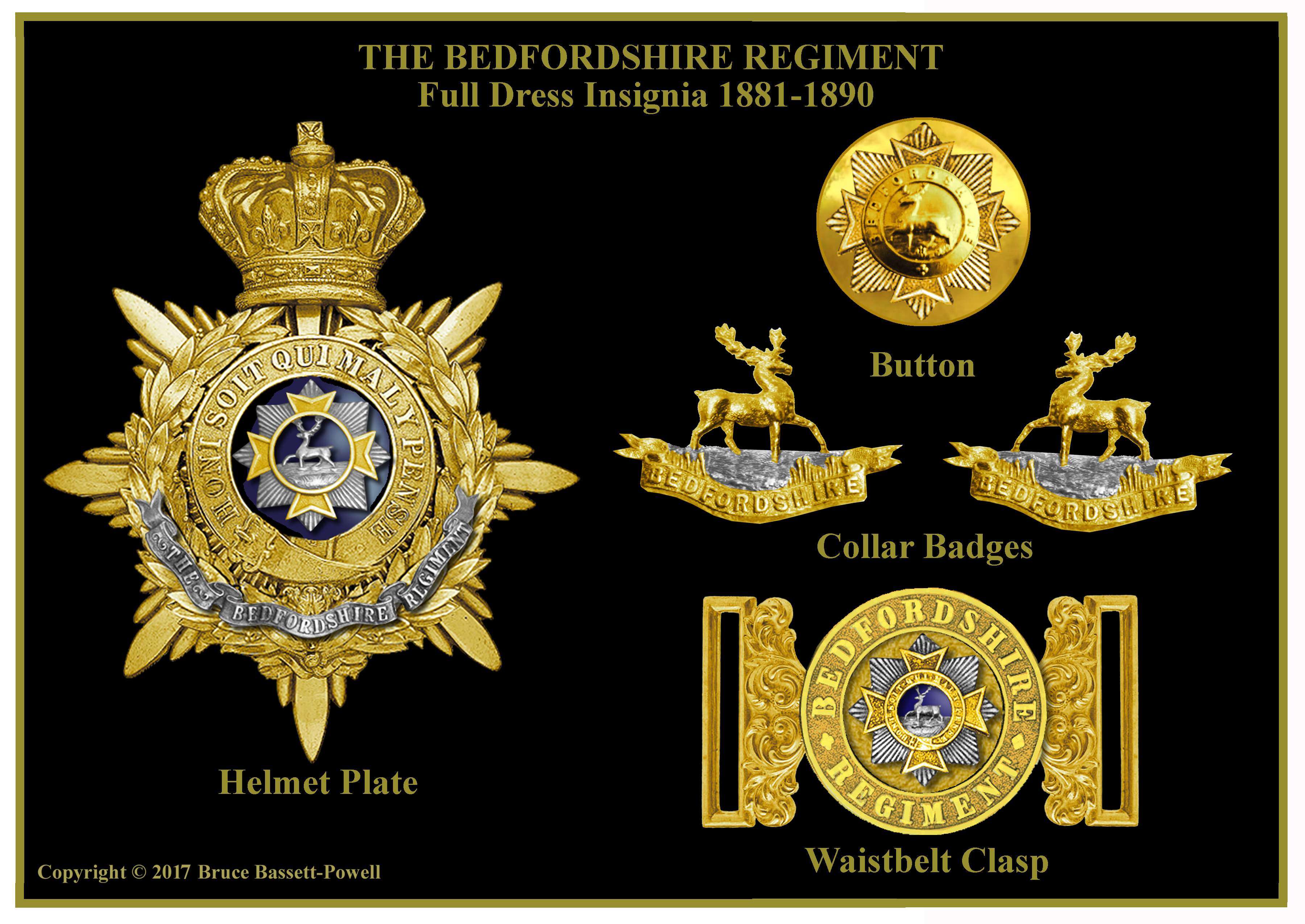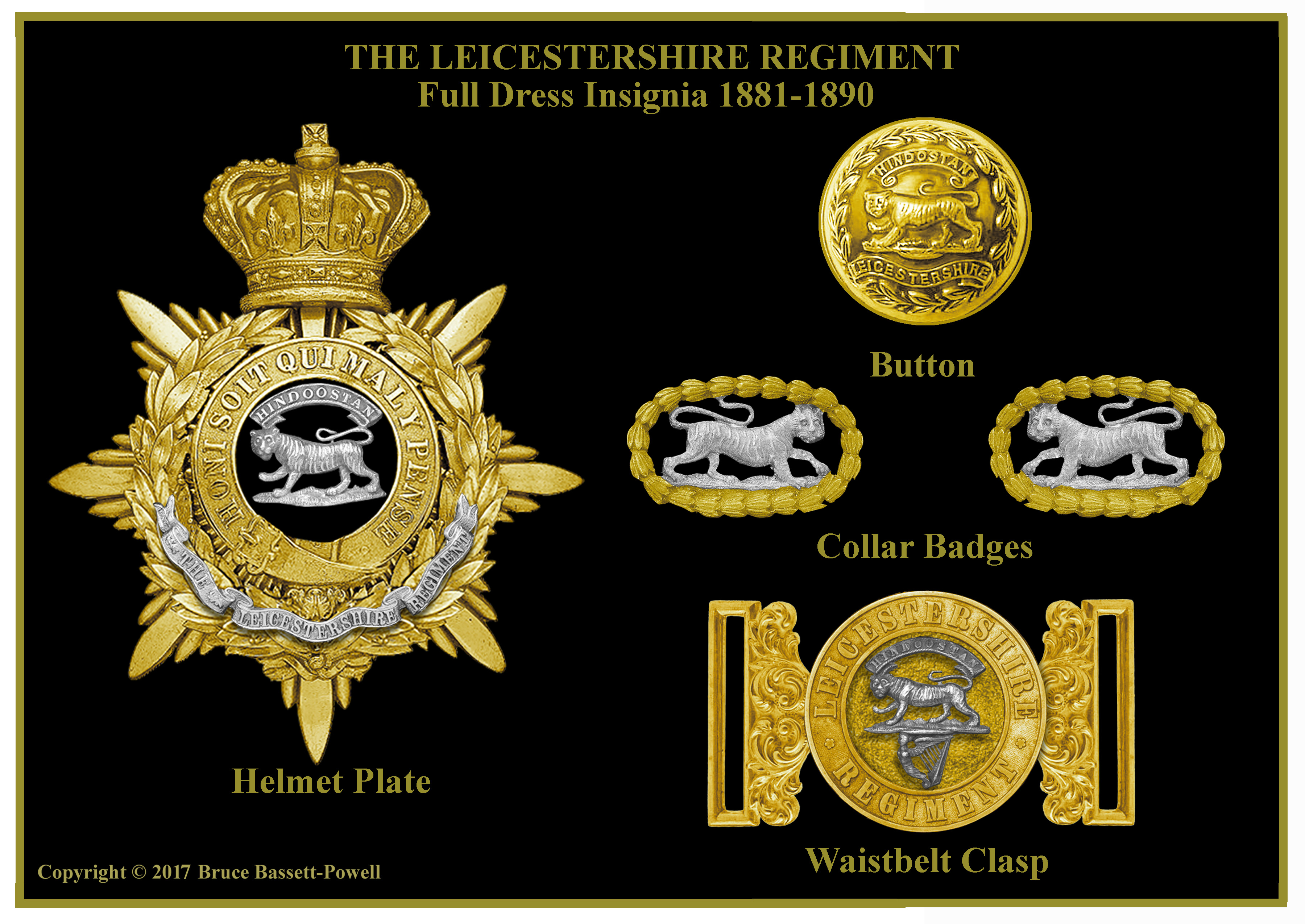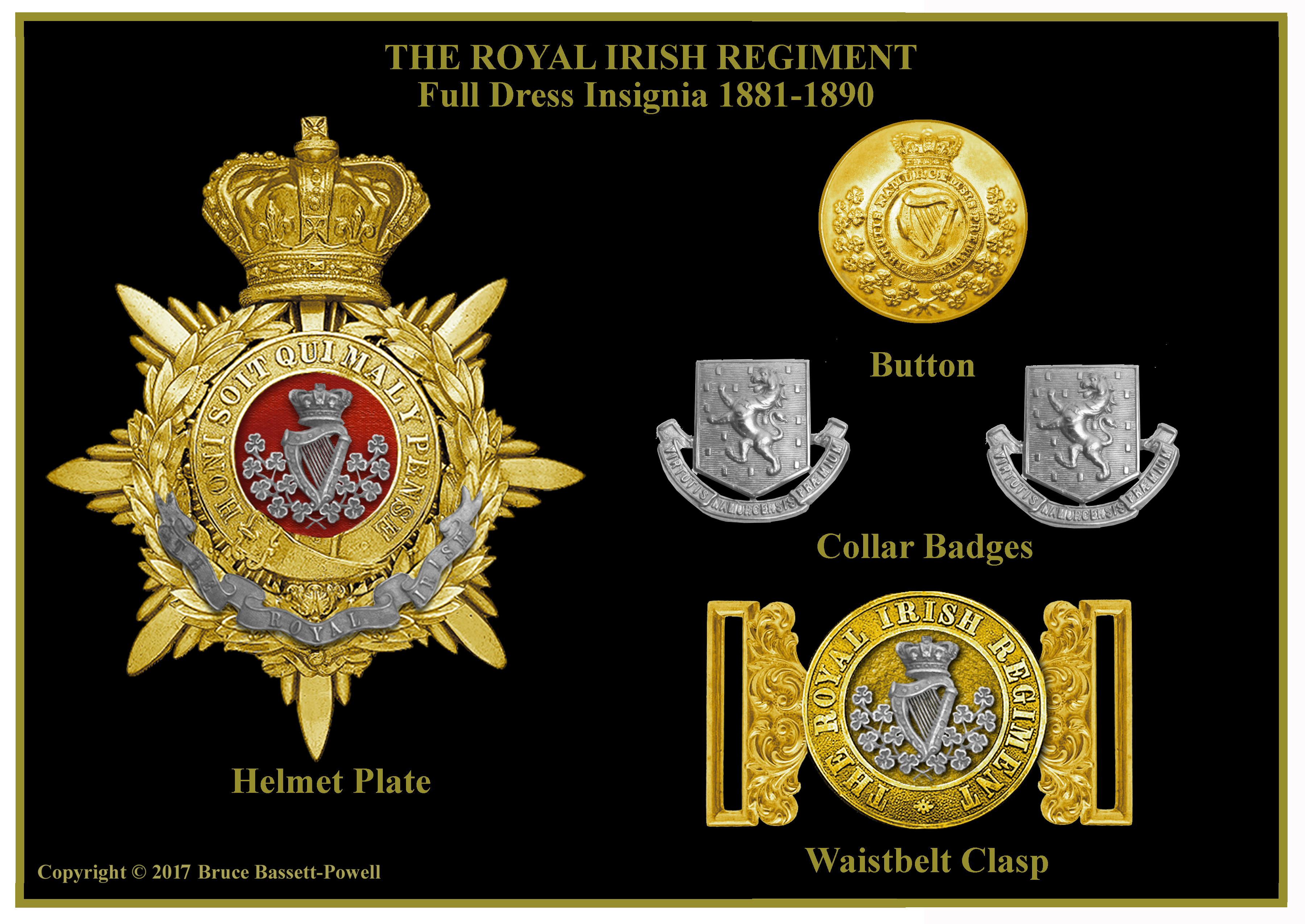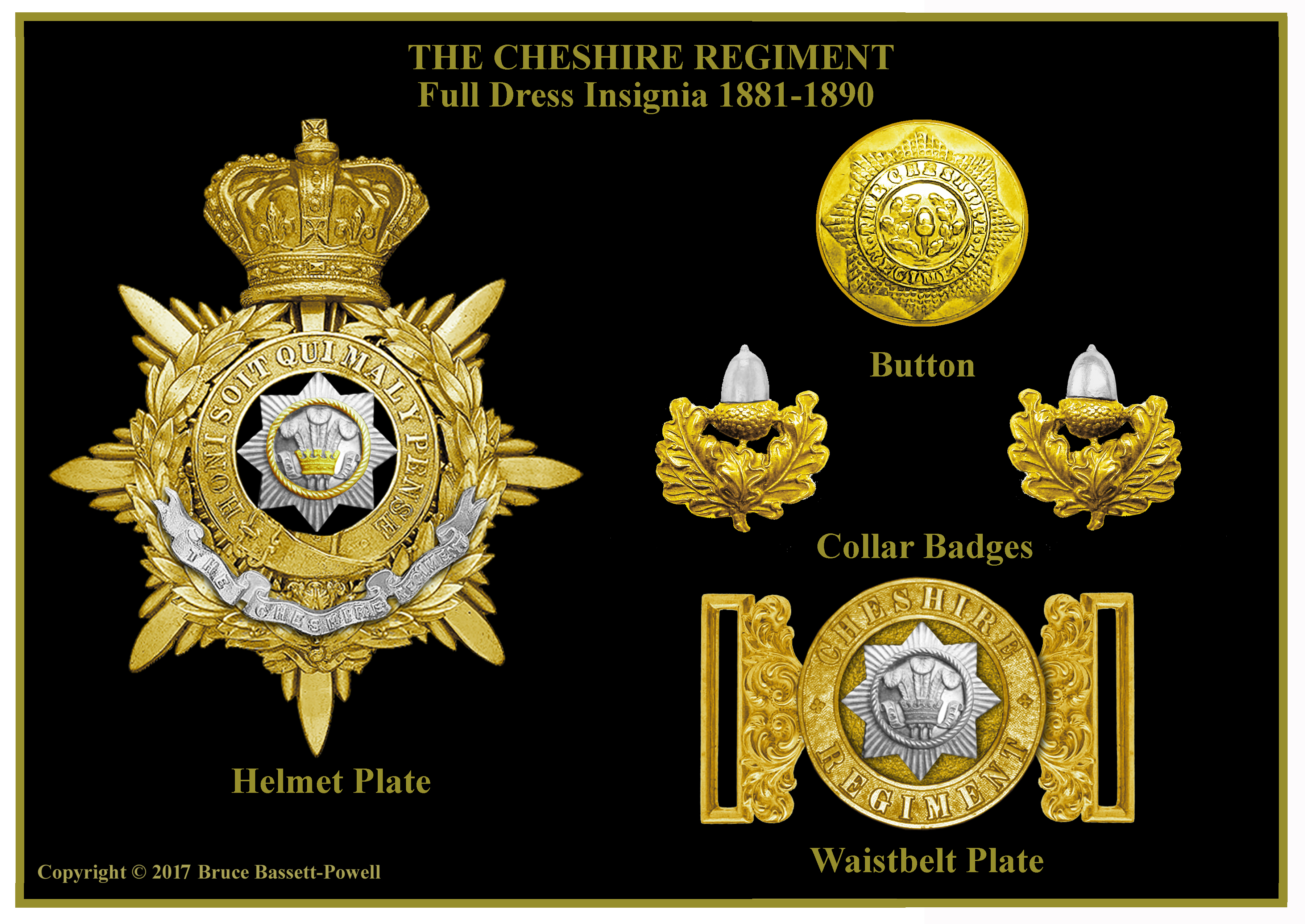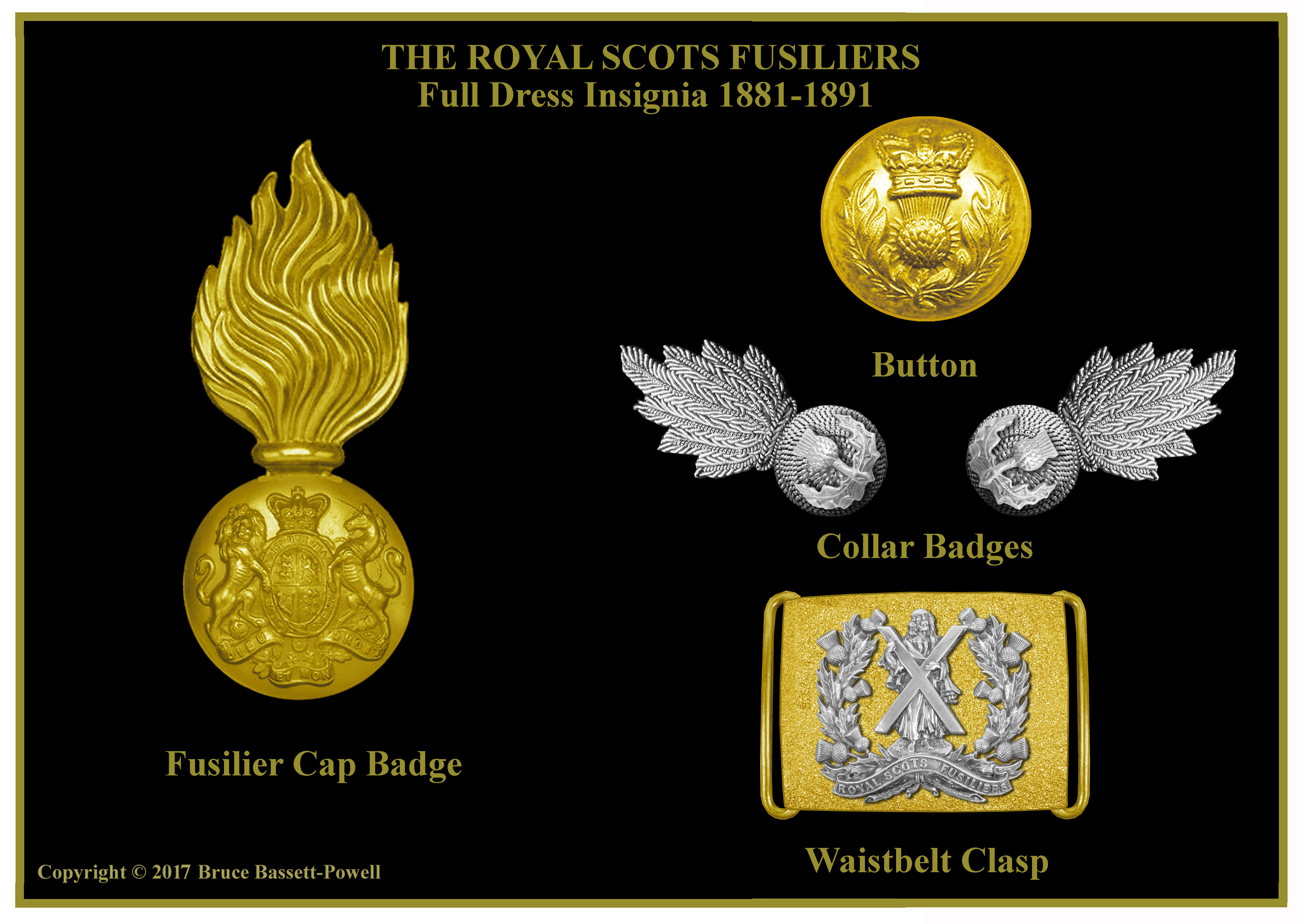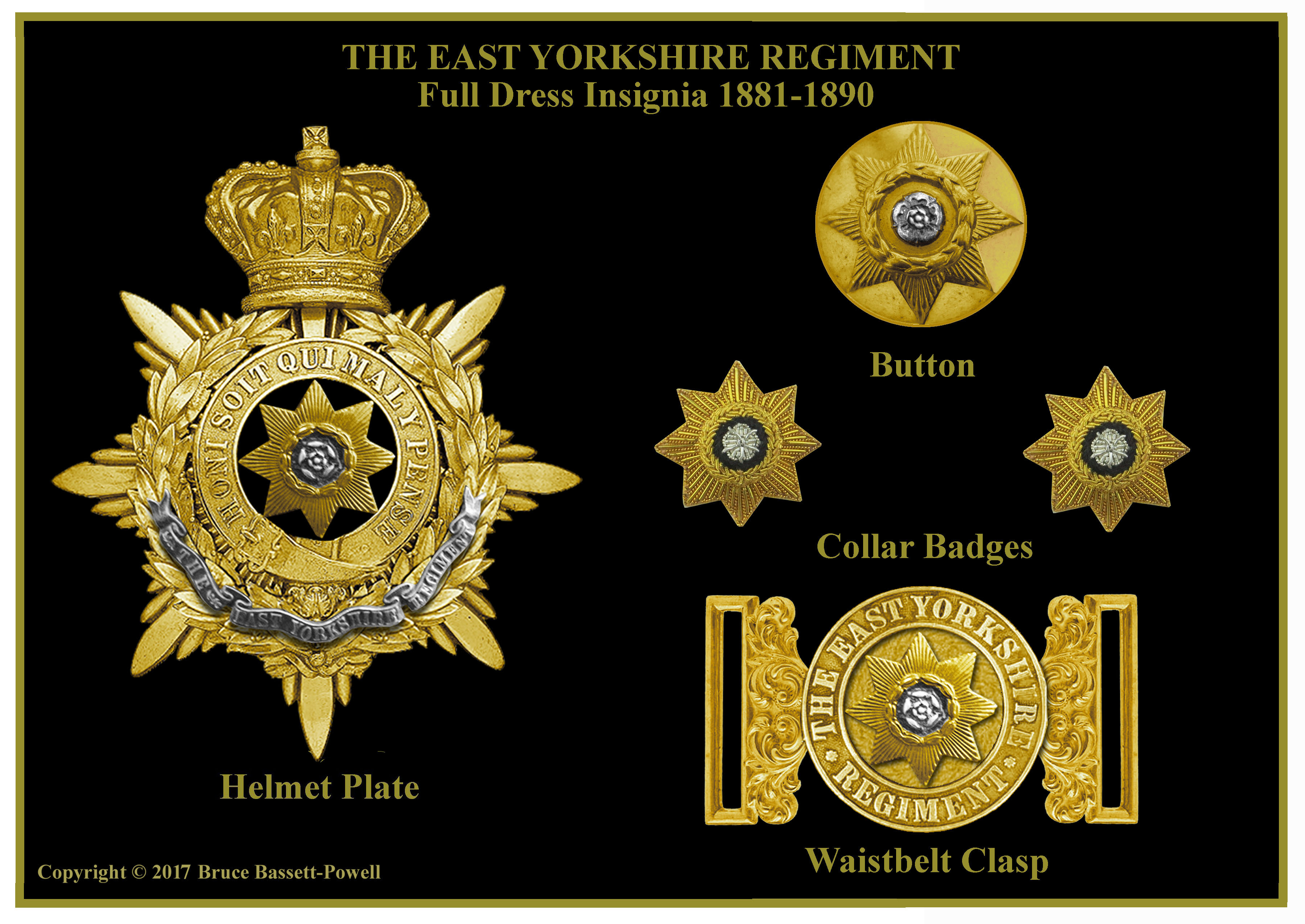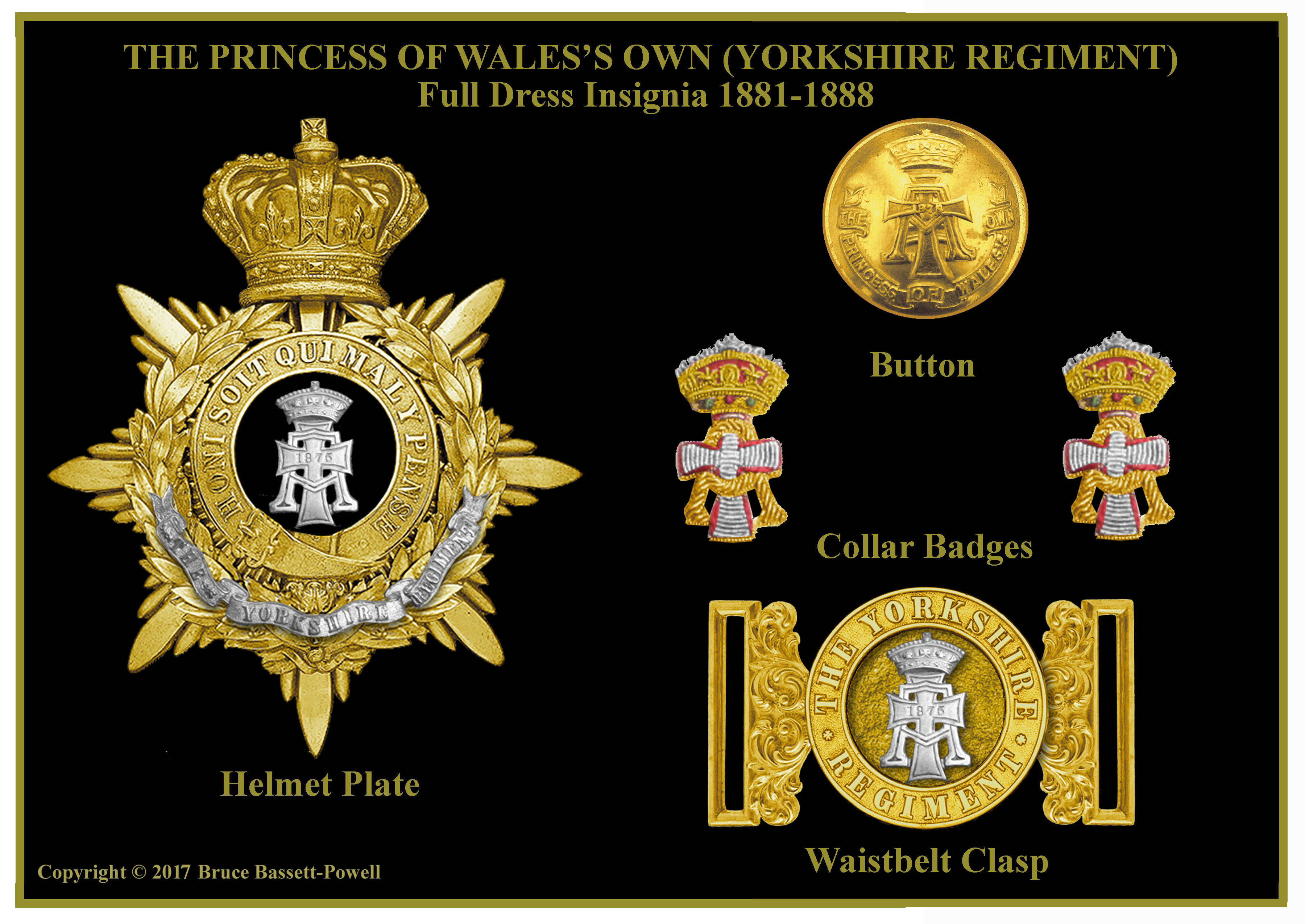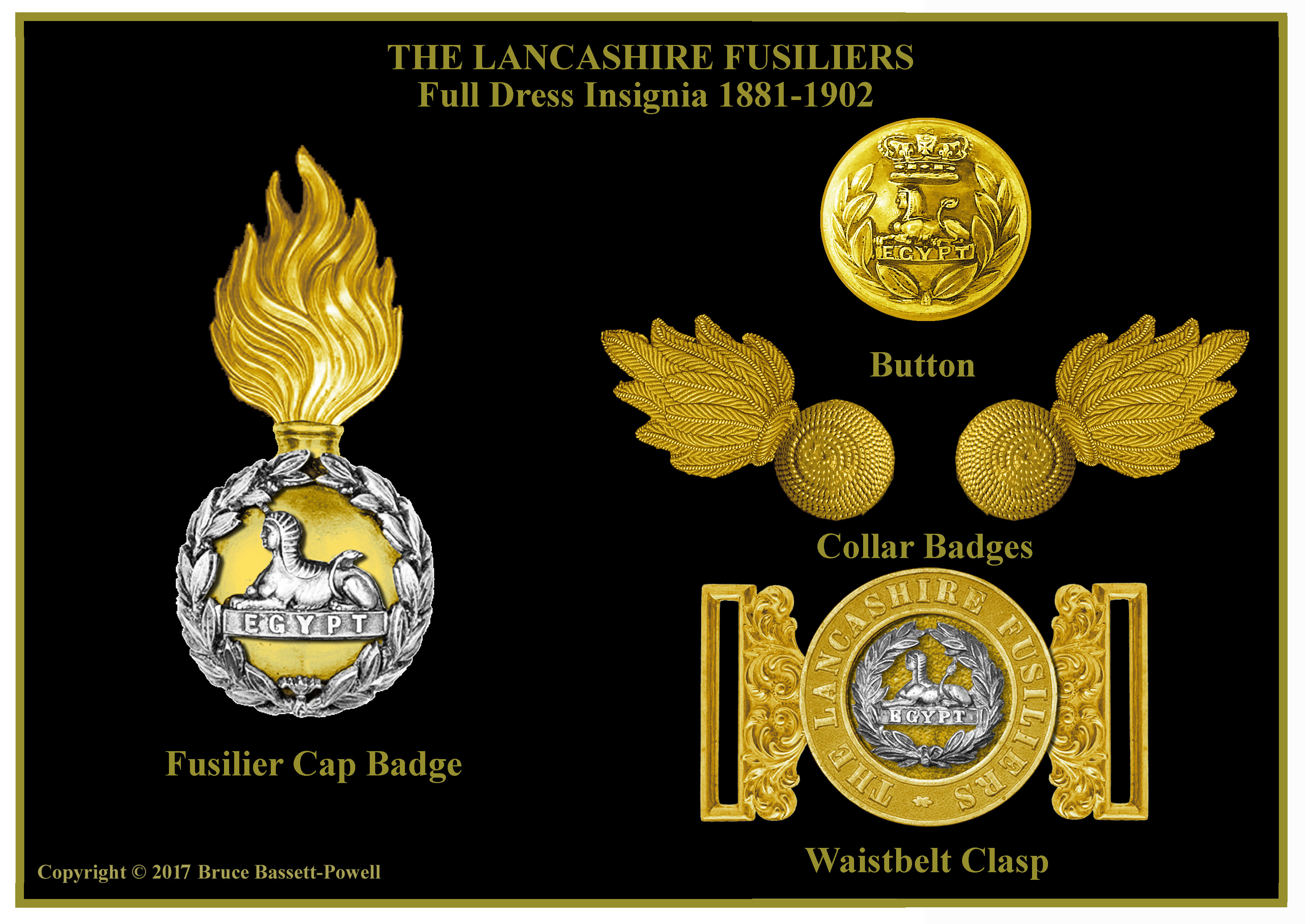Page 2
The Devonshire Regiment Formerly the 11th of Foot. The castle of Exeter and the motto Semper fidelis, was adopted by the Regular battalions in 1883, it had been the badge of the Devon Militia for a great many years.
The Suffolk Regiment Formerly the 12tht of Foot. The castle of Gibraltar with key and motto Montis Insignia Calpe was officially authorised for the regiment in 1836. They commemorate the part played by the regiment during the siege of 1779-1783. Additionally, an oak wreath features in regimental insignia and folklore suggests that this was connected with the family arms of a Colonel Duroune, who was appointed Colonel in 1741.
The Somerset Light Infantry Formerly the 13th of Foot. The Sphinx superscribed ‘Egypt’, commemorates the services of the regiment in Egypt, in 1801, and was authorised in July 1802. Additionally a Mural Crown, given with the Honour ‘Jellalabad’ in 1842 commemorates the gallant defence of that place. A light infantry bugle horn was adopted in 1822, when the regiment became light infantry, and displayed between its strings is the Cypher of Queen Victoria’s Consort, Prince Albert.
The West Yorkshire Regiment Formerly the 14th of Foot. The White Horse an motto Nec Aspera Terrent, was an old badge of this regiment. Additionally the Royal Tiger superscribed ‘India’ was authorised in 1838 to commemorate the regiment’s services there between, 1807-1831. The Prince of Wales Coronet, Plume and motto was authorised along with a title change in May 1876.
The East Yorkshire Regiment Formerly the 15th of Foot. The White Rose of York was an old badge of the regiment, but not displayed on insignia until after 1881.
The Bedfordshire Regiment Formerly the 16th of Foot. A Hart crossing a Ford, which was the old badge of the Hertfordshire Militia and a Star and Cross styled like the Order of the Bath and thought to be in honour of Viscount Beresford when he was appointed Regimental Colonel in 1823.
The Leicestershire Regiment Formerly the 17th of Foot. The Royal Tiger superscribed ‘Hindoostan’ commemorates the services of the regiment in India, 1804-1823. Additionally, the badge of an Irish Harp, which was granted to the Leicestershire Militia as a reward for services in Ireland.
The Royal Irish Regiment Formerly the 18th of Foot. The Sphinx, superscribed ‘Egypt’, commemorates the services of the regiment in Egypt in 1801. The Arms of Nassau with the motto Virtutis Namurcensis Proemium, were both bestowed upon the regiment by King William III as a reward for gallantry at Namur, 1695. Additionally, the Harp and Crown, thought to have been conferred on the regiment at the same time and for the same reason. The Dragon, superscribed ‘China’, commemorates the service of the regiment in China, 1840-1842.
The Yorkshire Regiment Formerly the 19th Foot. The White Rose of York, an old badge of the regiment. The Princess of Wales’s Cypher and Coronet, granted in 1875. Additionally, the Dannebrog Cross in honour of the Princess’s Danish origins.
The Lancashire Fusiliers Formerly the 20th of Foot. The Sphinx, superscribed ‘Egypt’, within a wreath of laurel, commemorates the services of the regiment in the campaign of 1801. Additionally, the Red Rose of Lancaster, which had been the badge of the 7th Lancashire Militia. A Grenade, adopted when the 20th became a fusilier regiment in 1881.
The Royal Scots Fusiliers Formerly the 21st of Foot. The Thistle within the circle of St Andrew, with the crown over it and inscribed with the motto Nemo me impune lacessit, was decreed in the regulations of 1747. Also the Royal Cypher and Crown since 1846 and the Royal Arms from 1881. A grenade marking the regiment’s specialised role as fusiliers escorting the Royal Artillery train.
The Cheshire Regiment Formerly the 22nd of Foot. The Acorn, long worn by the regiment, and said by them to commemorate its services at the battle of Dettingen, although no evidence of this has been found. It is more likely that the Acorn relates to the Arms of the Duke of Norfolk, the regiments first Colonel. Additionally, the Prince of Wales’s Plume, Coronet and motto had been the old badge of the Royal Cheshire Militia, as the Prince is also the Earl of Chester.
REVISED
APRIL 21ST
REVISED
APRIL 21ST
REVISED
APRIL 21ST



